 W
WAmusing Ourselves to Death: Public Discourse in the Age of Show Business (1985) is a book by educator Neil Postman. The book's origins lay in a talk Postman gave to the Frankfurt Book Fair in 1984. He was participating in a panel on George Orwell's Nineteen Eighty-Four and the contemporary world. In the introduction to his book, Postman said that the contemporary world was better reflected by Aldous Huxley's Brave New World, whose public was oppressed by their addiction to amusement, rather than by Orwell's work, where they were oppressed by state control.
 W
WAreopagitica; A speech of Mr. John Milton for the Liberty of Unlicenc'd Printing, to the Parlament of England is a 1644 prose polemic by the English poet, scholar, and polemical author John Milton opposing licensing and censorship. Areopagitica is among history's most influential and impassioned philosophical defences of the principle of a right to freedom of speech and expression. Many of its expressed principles have formed the basis for modern justifications.
 W
WBacklash: The Undeclared War Against American Women is a 1991 book by Susan Faludi, in which the author presents evidence demonstrating the existence of a media-driven "backlash" against the feminist advances of the 1970s.
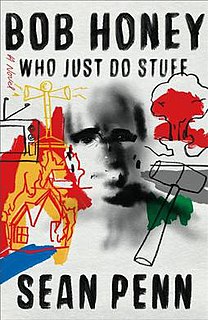 W
WBob Honey Who Just Do Stuff is a 2018 American satirical novel written by Sean Penn. Narrated from the point of view of Pappy Pariah, the book tells the story of Bob Honey, a supposed international assassin who kills elderly people with a mallet. Atria Books, an imprint of Simon & Schuster, published the novel on March 27, 2018.
 W
WBuffy the Vampire Slayer and Philosophy: Fear and Trembling in Sunnydale is a 2003 academic publication relating to the fictional Buffyverse established by two TV series, Buffy the Vampire Slayer and Angel.
 W
WComparing Media Systems: Three Models of Media and Politics (2004), by Daniel C. Hallin and Paolo Mancini, is a seminal study in the field of international comparative media system research. The study compares media systems of 18 Western democracies including nine Northern European countries, five Southern European countries and four Atlantic countries.
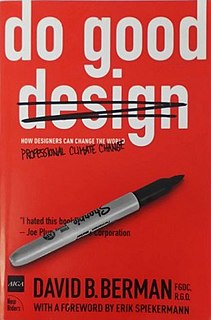 W
WDo Good Design: How Designers Can Change The World is a book by Canadian designer David B. Berman, with a foreword by Erik Spiekermann, published by Peachpit Press in January 2009. The book was co-published by AIGA, the world's largest-membership national design organization, as part of the AIGA Press / New Riders cooperation.
 W
WEmpire and Communications is a book published in 1950 by University of Toronto professor Harold Innis. It is based on six lectures Innis delivered at Oxford University in 1948. The series, known as the Beit Lectures, was dedicated to exploring British imperial history. Innis, however, decided to undertake a sweeping historical survey of how communications media influence the rise and fall of empires. He traced the effects of media such as stone, clay, papyrus, parchment and paper from ancient to modern times.
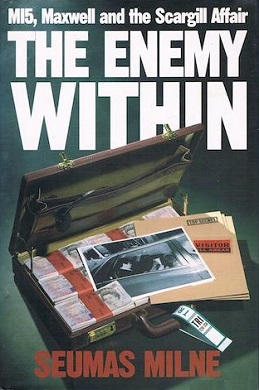 W
WThe Enemy Within: The Secret War Against the Miners is a book by British journalist and writer Seumas Milne, first published in 1994. Updated editions were released in 1995, 2004, and 2014.
 W
WEverything Bad Is Good for You: How Today's Popular Culture Is Actually Making Us Smarter is a non-fiction book written by Steven Johnson. Published in 2005, it details Johnson's theory that popular culture – in particular television programs and video games – has grown more complex and demanding over time and is making society as a whole more intelligent, contrary to the perception that modern electronic media are harmful or unconstructive. The book's claims, especially related to the proposed benefits of television, drew media attention. It received mixed critical reviews.
 W
WExpressive Processing: Digital Fictions, Computer Games, and Software Studies is a digital media textbook authored by Noah Wardrip-Fruin and published through the MIT Press. Throughout the book Wardrip-Fruin takes a look into "expressive processing" elements that partake in digital media. Wardrip-Fruin attempts to explain expressive processing through the ELIZA effect, The Tale-Spin Effect, The SimCity Effect, and many other elements of interactive digital media.
 W
WThe Fox Effect: How Roger Ailes Turned a Network into a Propaganda Machine is a 2012 book written by David Brock and Ari Rabin-Havt. Brock heads the progressive media watchdog group Media Matters, the stated mission of which is "to comprehensively monitor, analyze, and correct conservative misinformation in the U.S. media." The book details the numerous controversies of Fox News, with emphasis on its president, Roger Ailes.
 W
WFuture Perfect: The Case for Progress in a Networked Age (2012) is a non-fiction book published in 2012 by American best-selling author Steven Berlin Johnson. In this book, Johnson presents a new political worldview he names “peer progressivism.” This idea promotes collaboration amongst peers and the development of peer networks for the purpose of accomplishing large undertakings and ultimately helping society grow and change for the better.
 W
WThe Gutenberg Galaxy: The Making of Typographic Man is a 1962 book by Marshall McLuhan, in which the author analyzes the effects of mass media, especially the printing press, on European culture and human consciousness. It popularized the term global village, which refers to the idea that mass communication allows a village-like mindset to apply to the entire world; and Gutenberg Galaxy, which we may regard today to refer to the accumulated body of recorded works of human art and knowledge, especially books.
 W
WHack Attack: How the Truth Caught Up with Rupert Murdoch is a 2014 book about the News International phone hacking scandal by the British investigative journalist Nick Davies.
 W
WHaunted in the New World: Jewish American Culture from Cahan to The Goldbergs is a 2005 book by Donald Weber written as an overview of 20th century Jewish American literature and popular culture. Abraham Cahan was one of the most recognizable Jewish-American writers in both Yiddish and English. The Goldbergs began in 1929 as a radio comedy and drama about a Jewish-American family, and the show was initially targeted for Yiddish radio stations, but they made the leap first to CBS radio in 1936, and then to mass-market television in 1949, becoming a long-running situation comedy.
 W
WIt's Not News, It's Fark: How Mass Media Tries to Pass Off Crap as News is the first book by Fark.com founder Drew Curtis. It is a critical look at the Mass Media industry and the go-to stories used when there is a lack of hard news to report.
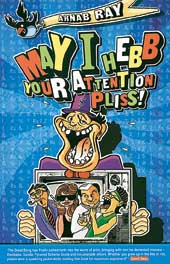 W
WMay I Hebb Your Attention Pliss is the first book of Arnab Ray, an Indian blogger. The book is an extension of his blog. It deals with Indian pop culture, Bollywood, satire and his own life experiences. He makes sarcastic comments on the Indian film industry, Indian politics and society in general.
 W
WThe Medium Is the Massage: An Inventory of Effects is a book co-created by media analyst Marshall McLuhan and graphic designer Quentin Fiore, with coordination by Jerome Agel. It was published by Bantam books in 1967 and became a bestseller with a cult following. The U.K. edition was published by Allen Lane Penguin Books using cover art by Newsweek photographer Tony Rollo.
 W
WThe New Media Reader is a new media textbook edited by Noah Wardrip-Fruin and Nick Montfort and published through The MIT Press. The reader features essays from a variety of contributors such as Lev Manovich, Richard Stallman, and Alan Turing. It is currently in use at multiple college campuses including Brown University ", Duke University, and the University of California at Santa Cruz.
 W
WNo Logo: Taking Aim at the Brand Bullies is a book by the Canadian author Naomi Klein. First published by Knopf Canada and Picador in December 1999, shortly after the 1999 WTO Ministerial Conference protests in Seattle had generated media attention around such issues, it became one of the most influential books about the alter-globalization movement and an international bestseller.
 W
WPower Without Responsibility is a book written by James Curran and Jean Seaton. Originally published in 1981 by Fontana, it has been translated into several languages and is now in its seventh edition. The title comes from a quote by former British Prime Minister Stanley Baldwin. It details the history of the news media in the UK from the eighteenth century to the present. It has been cited by Noam Chomsky in the introduction to Manufacturing Consent and by him in a televised BBC interview with Andrew Marr. Nick Cohen rated it "the best guide to the British media" in a review for the New Statesman.
 W
WThe Powers That Be is a 1979 book by David Halberstam about the American media, especially the following:CBS The New York Times The Los Angeles Times The Washington Post Time
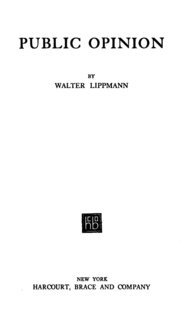 W
WPublic Opinion is a book by Walter Lippmann, published in 1922. It is a critical assessment of functional democratic government, especially of the irrational and often self-serving social perceptions that influence individual behavior and prevent optimal societal cohesion. The detailed descriptions of the cognitive limitations people face in comprehending their sociopolitical and cultural environments, leading them to apply an evolving catalogue of general stereotypes to a complex reality, rendered Public Opinion a seminal text in the fields of media studies, political science, and social psychology.
 W
WThe Society of the Spectacle is a 1967 work of philosophy and Marxist critical theory by Guy Debord, in which the author develops and presents the concept of the Spectacle. The book is considered a seminal text for the Situationist movement. Debord published a follow-up book Comments on the Society of the Spectacle in 1988.
 W
WMarshall McLuhan's tetrad of media effects uses a tetrad to examine the effects on society of any technology/medium by dividing its effects into four categories and displaying them simultaneously. The tetrad first appeared in print in McLuhan's posthumously-published works Laws of Media (1988) and The Global Village (1989).
 W
WUnderstanding Media: The Extensions of Man is a 1964 book by Marshall McLuhan, in which the author proposes that the media, not the content that they carry, should be the focus of study. He suggests that the medium affects the society in which it plays a role mainly by the characteristics of the medium rather than the content. The book is considered a pioneering study in media theory.